Ageing
Are we all gonna be Dorian Gray?
Ageing is progressive physiological changes in an organism that lead to senescence, or a decline of biological functions and of the organism's ability to adapt to metabolic stress. Ageing occurs in a cell, an organ or throughout the organism with the passage of time. It is a process that goes on over the entire adult life span of any living thing.
What do we know?
There is much debate among researchers about the mechanisms that contribute to the ageing process. However, it is widely accepted that damage to genetic material, cells and tissues that accumulates with age (and cannot be repaired by the body) is the cause of the loss of function associated with ageing. Main causes of ageing are genomic instability, telomere degradation, epigenetic changes, loss of proteostasis, impaired perception of nutrients, mitochondrial disfunctions, cellular senescence, exhaustion of stem cells, altered intercellular communication, deteriorated autophagy.
What do we not know?
What does ageing cause at the molecular level? Why can it be repaired in young organisms but not in old ones?
Clinical trials of senolytics might move toward studies in presymptomatic individuals to delay or prevent age-related conditions.
The remaining gaps in senescence research are the study of the function of senescent cells in other neurological disorders, including traumatic brain injury, spinal cord injury, chronic pain, epilepsy, etc.; the translation of potentials of senolytics in neurological disorders; the study of the dynamics of senescent cell accumulation. But what can senolytics do in the future?
Inspiring Examples
Unity Biotechnology was one of the darlings of the nascent anti-aging biotech sector. It listed big-name investors, such as Jeff Bezos and Peter Thiel, an impressive lineup of academic founders and a market valuation that once reached $700 million. The company was, in effect, the industry's standard-bearer for the therapeutic idea of destroying senescent cells to blunt the ravages of aging.
Non-Communicable Diseases
What will be the diseases of a post-human life?
Non-communicable diseases (NCDs), including heart disease, stroke, cancer, diabetes and chronic lung disease, are collectively responsible for 74%of all deaths worldwide.
More than three-quarters of all NCD deaths, and 86%of the 17 million people who died prematurely, or before reaching 70 years of age, occur in low- and middle-income countries.
NCDs share five major risk factors: tobacco use, physical inactivity, the harmful use of alcohol, unhealthy diets and air pollution.
What do we know?
Infectious disease control was at the top of the agenda during the sixty-third session of the World Health Assembly, which took place in May 2010 in Geneva.
With much attention given to progress towards achieving the health-related Millennium Development Goals, polio eradication, the implementation of the International Health Regulations, the regulation of counterfeit drugs, and influenza preparedness, there was little time to discuss one of the largest killers: non-communicable or chronic diseases.
What do we not know?
Chronic diseases are not seen as directly linked to poverty or development but are superficially attributed to affluence and Westernization.
These conditions do not evoke the same feelings of empathy and social justice as do the traditional diseases associated with poverty.
For this reason, we put the onus of responsibility on the individual rather than on society, on personal choice rather than socio-economic circumstance.
We do not know how NCDs and their related treatments will evolve.
Inspiring Examples
Noncommunicable diseases kill 41 million people each year, equivalent to 74%of all deaths globally.
Each year, 17 million people die from a NCD before age 70; 86%of these premature deaths occur in low- and middle-income countries.
Of all NCD deaths, 77%are in low- and middle-income countries.
Cardiovascular diseases account for most NCD deaths, or 17.9 million people annually, followed by cancers (9.3 million), chronic respiratory diseases (4.1 million), and diabetes (2.0 million including kidney disease deaths caused by diabetes).
References
- https://www.who.int/health-topics/cancer#tab=tab_1
- https://www.who.int/health-topics/cardiovascular-diseases#tab=tab_1
- https://www.who.int/health-topics/noncommunicable-diseases#tab=tab_1
- https://www.who.int/news-room/fact-sheets/detail/noncommunicable-diseases#:~:text=The%20main%20types%20of%20NCD,disease%20and%20asthma)%20and%20diabetes
Mental Health
An apple for the body, an apple for the mind?
In recent years, there has been increasing acknowledgement of the important role that mental health plays in achieving global development goals, as illustrated by the inclusion of mental health in the SDGs . Depression is one of the leading causes of disability. Suicide is the fourth leading cause of death among 15-29 year-olds. People with severe mental health conditions die prematurely - as much as two decades early - due to preventable physical conditions. Despite progress in some countries, people with mental health disturbs often experience severe human rights violations, discrimination, and stigma. Many mental health disturbs can be effectively treated at relatively low cost.
What do we know?
Mental health includes our emotional, psychological, and social well-being. It affects how we think, feel, and act. It also helps determine how we handle stress, relate to others, and make healthy choices. Mental health is important at every stage of life, from childhood and adolescence through adulthood.
Mental and physical health are equally important components of overall health. For example, depression increases the risk of many types of physical health problems, particularly long-lasting conditions like diabetes, heart disease, and stroke.
Similarly, the presence of chronic conditions can increase the risk of mental illness.
What do we not know?
Technology has opened a new frontier in mental health care and data collection. Mobile devices like cell phones, smartphones, and tablets are giving the public, healthcare providers, and researchers new ways to access help, monitor progress, and increase understanding of mental well-being.
What new solutions can be packaged into an extremely sophisticated app for smartphones or tablets to offer support and prevent problems? Could apps use the device's built-in sensors to collect information on a user's typical behavior patterns? Could AI be used to detect a change in behavior, and signal that help is needed before a crisis occurs?
How many people will use them in next future?
Inspiring Examples
Computer games are ubiquitous and can be utilized for serious purposes such as health and education. "Applied games" including serious games (in brief, computerized games for serious purposes) and gamification (gaming elements used outside of games) have the potential to increase the impact of mental health internet interventions via three processes. First, by extending the reach of online programs to those who might not otherwise use them. Second, by improving engagement through both game-based and "serious" motivational dynamics. Third, by utilizing varied mechanisms for change, including therapeutic processes and gaming features.
Lifestyles
More broccoli and basketball?
A healthy diet is fundamental for health, well-being, optimal growth and development. It protects against all forms of malnutrition. An unhealthy diet is one of the leading risks for the global burden of disease, mainly for noncommunicable diseases such as cardiovascular diseases, diabetes, and cancer. A healthy diet is also more environmentally sustainable.
However, healthy diets can be inaccessible, particularly in low- and middle-income countries, and in places and situations with high rates of food insecurity.
Sport is the other key element to healthy lifestyles, and is the world of sports is ever-changing. With technology rapidly gaining traction, changing demographics and consumer habits, it is extremely important to quickly adjust to emerging trends (such as global sports and e-sport).
What do we know?
The scientific objectives set by the European Commission provide guidance for the necessary changes, suggesting increased consumption of foods of plant origin - including fruits, vegetables, nuts, seeds, and whole grains - and a significant reduction in food of animal origin.
This goal can be achieved by ensuring more availability, accessibility, and lower prices for healthy food than unhealthy alternatives.
In addition, there is a need to improve food information and marketing, invest in public health information and sustainability education, introduce food guidelines, and use health services to provide advice.
What do we not know?
We are living longer but we are not living healthier. For every year's increase in life expectancy, we live only 0.8 years in a healthy state.
And when individuals live longer in a state of disability, it adds up to big costs for companies and economies. Globally, if no action is taken, we will lose $47 trillion of cumulative economic output between 2012 and 2030 because of the impact of non-communicable diseases and mental disorders.
We are witnessing all these limitations in living healthy, but we are not yet able to drive change. How can we turn nutrition into a healthy style? How can we transparently include sports in the equation?
Inspiring Examples
The environmental benefits of cultured meat are still very hard to predict. According to some estimates, the shift could not only reduce methane emissions but also decrease the use of water and land by over 95%. Growing meat directly from animal cells could also reduce the need of farmers to dose livestock with antibiotics, which contributes to the growing antibiotic resistance crisis, and with growth hormones, which are controversial for their impact on human health.
Deepening Disparities
Will technology make medicine more democratic?
Equity is the absence of unfair, avoidable or remediable differences among groups of people, whether those groups are defined socially, economically, demographically, or geographically or by other dimensions of inequality.
Health and health equity are determined by the conditions people are born in, grow, live, work, play and age, as well as biological determinants. Structural determinants (political, legal, and economic) with social norms and institutional processes shape the distribution of power and resources.
What do we know?
People living in poverty are more likely to struggle to afford nutritious food, lack access to health care, or be overworked or stressed.
This may make them susceptible to chronic diseases, contribute to faster aging, and shorten their lifespans.
In high-income countries, there is growing evidence suggesting that a person's 'rank' in society also impacts their health. For example, individuals who have a lower position in the social hierarchy report worse health outcomes, regardless of their incomes.
What do we not know?
Income and wealth inequality has risen in many countries in recent decades. Rising inequality and related disparities and anxieties have been stoking social discontent and are a major driver of the increased political polarization and populist nationalism that are so evident today.
An increasingly unequal society can weaken trust in public institutions and undermine democratic governance. Mounting global disparities can imperil geopolitical stability. Rising inequality has emerged as an important topic of political debate and a major public policy concern.
We do not know how to introduce an attitude of equality and how to eliminate disparities up to now.
Inspiring Examples
As ordinary people around the world suffer from the health and economic impacts of the pandemic, billionaires have seen their fortunes expand. According to Institute for Policy Studies analysis of Forbes data, the combined wealth of all U.S. billionaires increased by $2.071 trillion (70.3 percent) between March 18, 2020, and October 15, 2021.
Demographic changes
How do you plan your baby?
Maternal health refers to the health of women during pregnancy, childbirth and the postnatal period. Each stage should be a positive experience, ensuring women and their babies reach their full potential for health and well-being. Although important progress has been made in the last two decades, about 287,000 women died during and following pregnancy and childbirth in 2020. This number is unacceptably high.
What do we know?
EctoLife is the first artificial womb. Pods feature internal speakers that play a wide range of music and words so that babies can recognize languages and learn while still in the pods. Along with this, a special app allows you to record and watch your baby's growth. The app also allows for creating a playlist for your baby with your favorite music and your voice. EctoLife enhances your bonding with your baby. You will be able to sense your baby's kicks in the womb using a wireless haptic suit connected to your baby's growth pod and share this experience with your family and friends. You can use your virtual reality headset to explore what it is like to be in your baby's shoes thanks to a 360° camera installed inside your baby's growth pod.
What do we not know?
There are still large gaps in our knowledge about how some procedures, such as in vitro fertilization (IVF) method, affect women years down the road. Part of the problem is a dearth of follow-up data, which lacks national medical records.
It is also impossible to know which observed health risks are related to fertility treatments and which are a result of the underlying cause of infertility itself.
Another difficulty arises when subsets of patients are treated alike even when they are not. The health risks to women who freeze or donate their eggs have been extrapolated from research on IVF patients.
What about the future evolution and possibilities of the IVF method?
Inspiring Examples
In the dystopian novel Brave New World, published by English author Aldous Huxley in 1932, mass production is also applied to human reproduction, made completely extrauterine. Human embryos are produced and developed in special factories according to predetermined and planned quotas by world rulers - the beginning of the novel takes place in one of them - and there are no longer family ties of any kind ("everyone belongs to everyone else"). To prevent natural, and therefore uncontrolled, births, special practices of contraception are used and taught to young people in schools.
Beyond Gender
Two spirits or third gender?
Gender refers to the characteristics of women, men, girls and boys that are socially constructed. This includes norms, behaviors and roles associated with being a woman, man, girl or boy, as well as relationships with each other. As a social construct, gender changes from society to society and can vary over time.
Gender is hierarchical and produces inequalities that intersect with other social and economic inequalities, such as ethnicity, socioeconomic status, disability, age, geographic location, gender identity, and sexual orientation, among others. Gender interacts with sex but is different from sex, which refers to the different biological and physiological characteristics of females, males, and intersex persons, such as chromosomes, hormones and reproductive organs.
What do we know?
Defining gender as a condition determined strictly by a person's genitals is based on a notion that doctors and scientists abandoned long ago as oversimplified and often medically meaningless.
Genetics does play a role, though. In studies of twins, if one is transgender, the other is far more likely to also be transgender if they are identical, rather than fraternal twins. Identical twins are near matches, genetically; fraternal ones are not. The findings are similar for twins who have Type 1 diabetes, which is known to have a strong genetic component.
What do we not know?
The future of gender will be shaped by generational differences in definitions, fluidity, equality and power, and how gender is represented in media, marketing, online communities and society. The ways brands leverage or respond to changes in technology and media could help pave new opportunities or limits for how and where they connect with people and how people see and express themselves.
The award-winning Body of Mine game uses cutting-edge immersive storytelling tools to create an experience where you literally see yourself in someone else's skin and hear interviews with people with different identities about their experience. Is this the only way to develop the respect of differences and to overcome prejudices?
Inspiring Examples
Gender awareness is necessary as an end goal for everyone, but deliberate work on this issue is particularly important for youth workers and young people who want to address issues of gender and violence with their peers. Gender awareness is necessary because no one is ever completely able to 'step outside' of the social and cultural processes that partly shape our identities, values and perceptions, but we can still develop ways of reflecting and ways of interrogating ourselves, and this is very important for group work and group interaction. Gender awareness should also be seen as a process, because our ways of thinking about ourselves and others as gendered, sexual beings shift over time and in different contexts.
Migrations
Only human migrations?
Today there are about 1 billion migrants globally, about 1 in 8 of the global population. These include 281 million international migrants and 82.4 million forcibly displaced (48 million internally displaced, 26.4 million refugees, 4.1 million asylum seekers). UNHCR estimates there are many millions of stateless people globally.
The experience of migration is a key determinant of health and well-being. Refugees and migrants remain among the most vulnerable members of society faced often with xenophobia, discrimination, poor living, housing, and working conditions, and inadequate access to health services, despite frequently occurring physical and mental health problems.
What do we know?
Migration is multi-faceted. For countries affected by emigration, it can mean both short-term relief for weak-performing labor markets and a brain drain. In countries of immigration, migration not only means economic opportunities, but that societies must build up greater integration capacities.
What do we not know?
The magnitude and speed of future migrations is difficult to predict. It is also difficult to understand how the intersections between migration and future issues will be, including climate change, economic crises and conflicts.
The most complex issue regards migration related to climate change because this phenomenon has no precedent compared to the past.
Inspiring Examples
On 29th of September 2023, the judge of Catania Iolanda Apostolico did not validate the detention order for three migrants from the center of Pozzallo, considering the Cutro decree of the Meloni government illegitimate.
Through this legislation, Parliament decided to discourage the arrival of irregular migrants through the routes of smugglers, while condemning millions of people to legitimate imprisonment. These centers are not reception facilities, but places of detention of the foreign citizen pending the execution of expulsion orders following a return order.
This is just one of many examples of the influence of each government on migration. Although migrations will increase progressively, it is not easy to define how they can be regulated and how they can therefore also affect the health organization.
References
- https://www.who.int/health-topics/refugee-and-migrant-health#tab=tab_1
- https://www.who.int/health-topics/travel-and-health#tab=tab_1
- https://www.dni.gov/index.php/gt2040-home/gt2040-deeper-looks/future-of-migration
- https://www.meltingpot.org/2023/08/il-decreto-cutro-e-il-potenziamento-dei-centri-di-permanenza-per-i-rimpatri-cpr/
Work From Everywhere
Where will the future office be?
WFH is an acronym for "work from home", which describes a modern working arrangement where employees perform job responsibilities remotely. It offers flexibility, improved work-life balance, and cost savings for employers. The work-from-home model is made possible through readily available digital capabilities such as video conferencing, instant messaging, and cloud-based collaboration tools.
According to a recent survey by the Pew Research Center, 35%of workers with jobs that can be done remotely are now working from home full-time.
It allows people to stay with their loved ones, to work with those they want and where they want, but also triggers risks, including loneliness and obesity.
What do we know?
Even before the global pandemic of 2020 made working from home commonplace for millions, a growing number of employees had been saying goodbye to their onerous commutes.
Thanks to ever-evolving technologies like Skype, FaceTime, Slack, Zoom, Google Hangouts, authenticator apps, and cloud computing—not to mention texting and email—it's no longer necessary to be in an office full time to be a productive member of the team.
Several types of work can be done just as effectively, if not more so, from a home office.
What do we not know?
The future technologies that we can predict will not only change the work but also the foundations of cultures around the world.
The world is aware that the concentration of wealth is increasing, income gaps are widening, economic growth without work seems to be the new norm, profits from investment in capital and technology make usually better than work, future technologies can replace much of the work human physical and mental and long-term structural unemployment is a forecast "business as usual" without surprises.
What will the long-term consequences be of these changes?
What is it lost when working remotely?
Inspiring Examples
According to software reviewer giant Getapp, the number of people working from home has risen by 400%since 2010. In fact, 78%of respondents work remotely some of the time. There are remote-first companies like Zapier, Gitlab, and Toptal, and remote-friendly companies like Microsoft and Google.
With the advent of technological and medical breakthroughs, health centers began to expand. Different branches of medicine housed specialists, which created an order for in-person consultations and record keeping. Healthcare became fully digitized, with wearable devices, and online reports that could be uploaded by labs and looked at by both doctor and patient.
References
- https://www.millennium-project.org/projects/workshops-on-future-of-worktechnology-2050-scenarios/
- https://wfhresearch.com/wp-content/uploads/2023/06/GSWA-2023.pdf
- https://www.mckinsey.com/industries/real-estate/our-insights/americans-are-embracing-flexible-work-and-they-want-more-of-it
- https://www.forbes.com/advisor/business/remote-work-statistics/
Do It Yourself
I know best what's best for me …
Self-management is our ability to manage our behaviors, thoughts, and emotions in a conscious and productive way.
Someone with strong self-management skills knows what to do and how to act in different situations. Self-management means you understand your personal responsibility in different aspects of your life, and you do what you need to fulfill that responsibility.
On the other side, self-management for chronic illness is a current high profile in this era. Policy and clinical recommendations relating to chronic illnesses are framed within a language of lifestyle risk management.
What do we know?
This self-management definition has its roots in emotional intelligence theory, where this capability may also be referred to as self-regulation. Self-regulation is supported by our capacity for self-awareness, which helps us create conscious access to our thoughts, desires, and feelings. Only once we are aware of these things, can we begin to control and express them appropriately.
Those with well-developed self-awareness and self-regulation are well-positioned to develop a set of self-management skills that support them on their work and personal journeys.
What do we not know?
Self-management has very broad meaning and it gives many benefits to the human beings. However, majority of the people has not identified the importance of self-management. They always try to manage others. The most important part is first we should manage our self then we should try to manage others.
Self-management consists with many very important components called: self-care management, self-mastering, self-quality management, self-career management, self-finance management, self-development, self-marketing management, self-disciplinary management, and self-performance management.
But are we sure that we 'll be enough for ourselves?
Inspiring Examples
For both clinical and economic reasons, the increasing number of persons living with chronic conditions represents a public health issue of growing importance. Emphasizing patient responsibility, and acting in concert with the provider community, self-management represents a promising strategy for treating chronic conditions—moving beyond education to teaching individuals to actively identify challenges and solve problems associated with their illness. Self-management also shows potential as an effective paradigm across the prevention spectrum (primary, secondary, and tertiary) by establishing a pattern for health early in life and providing strategies for mitigating illness and managing it in later life.
References
- https://www.betterup.com/blog/what-is-self-management-and-how-can-you-improve-it
- https://gbhwc.guam.gov/ten-things-you-need-know-about-selfmanagement
- https://www.forbes.com/sites/forbestechcouncil/2022/05/05/the-self-management-revolution-is-here-how-to-embrace-it/
- https://www.ncbi.nlm.nih.gov/pmc/articles/PMC4103232/











